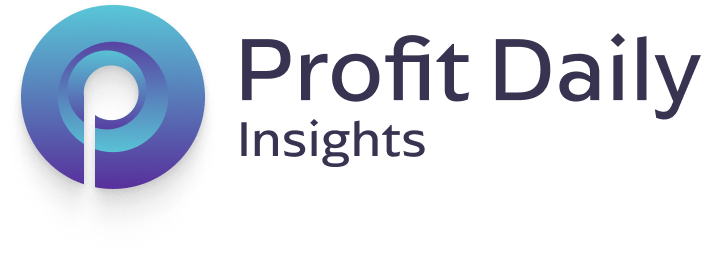IoT Analytics, based on its recently published IoT Startup Landscape 2024 Report and Database, has identified over 3,300 IoT startups in 2024.
Geographically, while North America remains a dominant region as it accounts for 36% of the total startups, Asia-Pacific has emerged as a major growth market, representing 24% of all IoT startups. Several large investments were made in individual IoT hardware companies. Furthermore, IoT startups continue to prioritize the manufacturing sector, but there is growing interest in smart city and energy/utility applications. The incorporation of AI capabilities is becoming increasingly prevalent, while analytics remains the most common offering.
Key insights:
There are over 3,300 active IoT startups, according to the latest 83-page IoT Startup Landscape 2024 Report and Database—a steep rise over the 1,205 identified in 2021.
7 notable insights standout about the IoT startup landscape 2024: 1) Increasing share of startups in APAC, 2) A Chinese company has the highest funding, 3) Large investments into individual IoT hardware startups, 4) Techstars remains the top investor, 5) Shifting focus toward cities and energy/utilities, 6) AI taking a foothold, and 7) Analytics is the most common offering.
Select quotes:
Knud Lasse Lueth, CEO at IoT Analytics, comments that
“As the focus intensifies on AI, it is important not to overlook other flourishing tech sectors like IoT. Our research identified over 3,300 companies in the connected IoT devices ecosystem founded in the last 8 years. While only 5% of these IoT startups explicitly focus on AI, there is a growing trend towards AIoT, the integration of AI and IoT.”
Zeynep Kaman, Market Analyst at IoT Analytics, adds that “The IoT startup landscape is more vibrant than ever, with over 3,300 identified startups globally. While North America continues to lead in the number of startups, the significant rise in the Asia-Pacific region highlights a growing diversification in the market. The substantial funding in semiconductor and AI sectors in both APAC and North America is important for driving technological advancements. Additionally, the integration of AI in IoT solutions is becoming increasingly prevalent, enhancing the capabilities of IoT technologies and enabling real-time data analysis and decision-making.”
IoT startup landscape overview in 2024
The number of identified active IoT startups rose 2.7x between 2021 and 2024. Research for IoT Analytics’ 83-page IoT Startup Landscape 2024 Report and Database identified over 3,300 IoT startups—a steep rise over the 1,205 identified active startups in 2021. While part of this comes down to IoT Analytics’ more sophisticated methodology to find all possible startups in 2024, this increase highlights the vibrancy of the IoT community.
7 notable research insights
The IoT startups report offers a more detailed landscape overview with deep dives into IoT startup data by technology, region, and industry (with the accompanying database offering more granular data). Additionally, the IoT Analytics analyst team identifies their top 17 IoT startups and the reasons why. Among the many insights that can be derived from the report, here are 7 that stand out:
1. The share of IoT startups in APAC is increasing
North America has the most IoT startups, but Asia is gaining. Of the 3,300 identified startups, 36% are in North America, down from 41% in 2021. Meanwhile, 24% of IoT startups are in the Asia-Pacific (APAC) region, up from 16% in 2021, reflecting diversification in the IoT startup landscape. While the number of IoT startups in every tracked APAC country rose, India saw the highest climb compared to 2021, from 84 to 388.
2. US-based IoT startups top total funding share, but a Chinese IoT startup leads overall
The top 20 IoT startups collectively received 31% of all investments. Between 2016 and 2024, the top 20 IoT startups received nearly $6.7 billion in funding. While 11 of the 20 top funding earners were in the US, the China-based semiconductor company Eswin Computing received over $1 billion—the only company to pass the $1 billion mark. The second and third top funding earners are both from the US: Figure and Verkada.
IoT startup spotlight: Eswin Computing
Founded in 2016, Eswin Computing develops integrated chips and focuses on IoT connectivity and AI data processing, among other areas. Specifically for cellular IoT applications, Eswin produces WAN IoT ICs that operate under Cat.1 and Cat1 bis connectivity protocols, which are popular in China and have helped fuel the recent upswing in the cellular IoT module market.
3. Several large investment rounds for IoT hardware startups
Large funding amounts for IoT semiconductor and robotics startups. Capital-intensive investments into robotics and IoT semiconductor startups have seen a notable rise in recent years. Aforementioned Eswin Computing is one such company that has benefitted from the push for more chips post Covid—in 2021, it raised $473.7 million Series B and an additional $395.2 million Series C. The ongoing skilled labor shortage has given rise to new robotics startups . US-based Figure formed in 2022 to help companies address these issues by developing humanoid robots. It has raised a massive $675 million in Series B just this year.
IoT startup spotlight: Figure
US-based Figure is the highest-funded IoT startup in North America. Leveraging AI and human-like agility in its engineering, Figure develops autonomous, general-purpose humanoid robots aimed at helping companies address workforce challenges such as labor shortages or unsafe job tasks. In January 2024, Figure signed a commercial agreement with BMW to identify initial use cases for the robots and then deploy the developed robots to BMW’s manufacturing facility in Spartanburg, South Carolina.
4. Techstars remains the top IoT startup investor
Techstars continues to lead in IoT startup investments by a long shot. As of April 2024,US-based venture capital firm Techstars had invested in 73 still-active IoT startups founded between 2016 and 2024. This is more than double the amount of IoT startup investments from the US National Science Foundation—a federal agency that supports research and education across the sciences and engineering—which came in second with 31 investments in still-active IoT startups founded between 2016 and 2024. In IoT Analytics’ 2021 research into IoT startups, Techstars was the lead investor, while EASME (an EU initiative) was #2 and the EU-based Startup Bootcamp was #4. This time, no EU-based investor in the top 5.
IoT startup spotlight: Wakeo
France-based Wakeo is one of Techstar’s largest IoT startup investments, as of April 2024. The startup provides a software-as-a-service platform to help transportation companies maintain real-time visibility of their transport flows. Their solution not only helps companies optimize transport plans but also helps them measure and reduce transportation-related emissions, giving it a sustainability focus as well.
5. Manufacturing receives the most attention from IoT startups, but smart city- and energy/utility-focused startups gain traction
Over a quarter of startups focus on the manufacturing industry, but focus on cities and utilities is rising. Recently, there has been a shift in the focus of newly founded IoT startups from the manufacturing industry to sectors like smart cities and energy/utilities. While the overall share of active IoT startups targeting the manufacturing industry remains approximately 36%—still the highest—recent years show a declining trend. In 2023, only 28% of newly founded IoT startups targeted the manufacturing sector, down from 33% in 2021 and a peak of 40% in 2017.
Meanwhile, the shares of IoT startups focusing on other sectors are increasing. For instance, the overall shares for active IoT startups targeting smart cities and energy/utilities are approximately 10% each. However, in 2023, 13% of new IoT startups targeted smart cities, up from 11% in 2021, while 13% focused on energy/utilities, increasing from 7% in 2021. These trends suggest a shift in the target markets of newly founded IoT startups.
IoT startup spotlight: ZARIOT
Ireland-based ZARIOT is an IoT connectivity provider, focusing on security and protecting data over mobile network infrastructure. Founded in 2018, it covers a wide range of segments, including smart cities and energy/utilities.
One example of ZARIOT’s smart cities projects is their partnership with vadeCity, a Spain-based city-mobility-focused small-to-medium enterprise aiming to help companies achieve their sustainability goals. vadeCity’s bicycle and scooter system—all-in-one parking and charging stations for shared, private bicycles, e-bikes, and scooters—relies on mobile networks and 3-point security measures to protect private and public assets, which is where ZARIOT comes in with their focus on mobile security.
6. AI taking a foothold
Over 5% of IoT startups worldwide are focused on AI-based solutions. Of the 3,330 IoT startups that are currently active, only 175 (5.3%) have a visible AI focus as part of their IoT offering. IoT Analytics believes this number will increase strongly in the coming months and years, as the appetite for AIoT innovations in enterprises is strong and innovation in new fields often comes from startups. APAC has the highest share of AI-focused IoT startups at 6.3% of the region’s total startups.
IoT startup spotlight: ai-omatic
Germany-based ai-omatic is a deep-tech startup focusing on cloud- and AI-based software solutions for predictive maintenance. At Hannover Messe 2024, ai-omatic showcased its AI-powered predictive maintenance solution Digital Maintenance Assistant using a sensor connected to a motor. Company representatives highlighted that the solution gathers data directly from factory-level operations and leverages AI to analyze the data.
7. Analytics is the most common offering
3 in 5 IoT startups offer analytics. Many IoT startups cover more than one of the 13 parts of the IoT tech stack. Analytics stands out as the topmost covered technology element, with 61% of IoT startups offering it.
IoT startup spotlight: H2Ok Innovations
US-based H2Ok Innovations assists companies with data- and analytics-driven optimization of industrial liquid and fluid systems used in supply chain and manufacturing processes. Through H2Ok Innovation’s unique end-to-end solution comprising proprietary spectral sensors, machine learning at the edge, and an AI-based data analytics platform, companies can collect and analyze the data they need for accurate liquid management.
What it means for startups
5 questions that startup founders should ask themselves based on the insights in this article:
Market positioning: How can we differentiate our startup in the increasingly competitive IoT landscape?
Investor engagement: How can we effectively engage leading IoT startup investors like Techstars, and what key aspects of our startup should we highlight to attract their investment?
Industry focus: Should we target the traditionally dominant manufacturing sector, or pivot towards emerging sectors like smart cities and energy/utilities where there is growing interest?
AI Integration: How can we incorporate AI into our IoT solutions to capitalize on the growing trend of AIoT, and what specific AI-based features can set us apart from competitors?
Sustainability initiatives: How can we integrate sustainability into our IoT solutions, similar to Wakeo’s platform for optimizing transport flows and reducing emissions, to appeal to environmentally conscious clients and investors?
What it means for tech investors
5 questions that tech investors should ask themselves based on the insights in this article:
Market trends: How is the increasing share of IoT startups in APAC affecting the global market dynamics, and what opportunities or challenges does this present for potential investments?
Sector focus: With the shift from manufacturing to smart cities and energy/utilities, which sector holds the most potential for growth and return on investment in the coming years?
AI integration: Given the rising importance of AI in IoT startups, how can I identify startups that are effectively integrating AI to offer innovative and scalable solutions?
Sustainability impact: How do startups focusing on sustainability, like Wakeo, compare in terms of investment potential and long-term impact to those focusing purely on technological advancements?
Competitive landscape: How can I assess the competitive landscape of the IoT sector to identify which startups have a unique value proposition and a competitive edge over others?
Disclosure
Companies mentioned in this article—along with their products—are used as examples to showcase a vibrant IoT startup landscape. No company paid or received preferential treatment in this article, and it is at the discretion of the analyst to select which examples are used. IoT Analytics makes efforts to vary the companies and products mentioned to help shine attention to the numerous IoT and related technology market players.
It is worth noting that IoT Analytics may have commercial relationships with some companies mentioned in its articles, as some companies license IoT Analytics market research. However, for confidentiality, IoT Analytics cannot disclose individual relationships. Please contact compliance@iot-analytics.com for any questions or concerns on this front.
How IoT Analytics defines IoT startups
For the purposes of the IoT Startup Landscape 2024 Report and Database and this article, IoT Analytics defines an IoT startup as a company that is no older than 8 years, has not had an initial public offering (IPO), and has not been acquired. These companies must also focus on building solutions in at least one area of the IoT tech stack—hardware, connectivity, middleware and software infrastructure, and services.
IoT Analytics distinguishes 13 tech offering types among the 4 areas of the IoT tech stack:
IoT hardware
Processors/semiconductors
Devices (including sensors)
Developer boards/kits
Other hardware
Complete device
IoT connectivity
Communication protocols and services
Connectivity gateways/hubs/modules
IoT middleware and software infrastructure
IoT platforms
Analytics
IoT security
Databases
IoT services
Tool development
IoT development and system integration services
Research methodology
IoT Analytics compiled the data for the IoT Startups Database 2024. The foundational datasets were sourced from publicly available links on the internet through desktop research using various sources. All stats in the report and this article are as of April 2024.
The post IoT Startup Landscape 2024: 7 notable insights appeared first on IoT Business News.





